- The Meaning of Critical Thinking: A Key Skill for Navigating Today’s Information Landscape - November 3, 2025
- Grandparents Can Develop Activist Grandchildren - September 29, 2025
- Top Six Reasons Credit Union Benefits Are a Smart Choice Over Banks - August 18, 2025
Last Updated on October 23, 2024
I recently took a Living Legacy Pilgrimage to Montgomery, Alabama with UU Minister Gordon Gibson to learn about racial injustice. Gibson co-founded the Living Legacy Project and is the author of Southern Witness: Unitarians and Universalists in the Civil Rights Era.
We visited The Legacy Museum, The National Memorial for Peace and Justice, The Freedom Rides Museum, the Civil Rights Memorial, and Dexter Avenue King Baptist Church. This was a life-changing trip.
Our Pilgrimage started at The National Memorial for Peace and Justice. The ‘lynching’ memorial opened in 2018. It remembers the victims of racial terror lynchings and the trauma of millions of others who watched these murders. This place made a huge impression on me, as I wrote in a post called It’s time to talk about it. So, I’m grateful for the opportunity to visit.
The Legacy Museum
Directly on the heels of our Memorial visit came The Legacy Museum. The Equal Justice Initiative (EJI) created both the Memorial and the Legacy Museum. Bryan Stephenson, the author of Just Mercy: A story of justice and redemption, founded EJI in 1989 to protect Americans with endangered fundamental rights. For example, EJI works to end mass incarceration and racial injustice. Also, EJI provides legal help for innocent people placed on death row and for children tried as adults.
About the Museum
Hear Bryan Stephenson talk about The Legacy Museum.
Stephenson discusses racism in his TED Talk We Need to Talk about an Injustice. For example, mass incarceration means a large percentage of black Alabamans have lost the right to vote.
“Right now in Alabama, 34 percent of the black male population has permanently lost the right to vote. We’re actually projecting in another 10 years the level of disenfranchisement will be as high as it’s been since prior to the passage of the Voting Rights Act.”
The Legacy Museum building was used to house slaves. The pictures, videos, written stories, and interactive displays helped me understand the history and impact of slavery. But they also highlighted current racial injustices of mass incarceration and police brutality. Through an interactive timeline, I learned how racial injustice transitioned from slavery and lynching to persecution and segregation. Currently, racial injustice is perpetuated in ‘legal’ ways through incarceration.
The Museum provided many opportunities to hear real stories through recordings, words, and even holography.
“Vaclav Havel, the great Czech leader, talked about this. He said, “When we were in Eastern Europe and dealing with oppression, we wanted all kinds of things, but mostly what we needed was hope, an orientation of the spirit, a willingness to sometimes be in hopeless places and be a witness.” Bryan Stephenson
Here are the latest 2023 updates about the Legacy Museum in Montgomery, Alabama:
The Equal Justice Initiative (EJI) announced plans to expand The Legacy Museum to include a new building focusing on the history of slavery and its enduring consequences for Black Americans. The expansion is expected to open in 2025 and will be called the “Freedom Memorial.“
The EJI released a report titled “The Legacy of Lynching in America,” which examines the history of racial terror lynching and its contemporary impact. The report includes data on over 4,400 documented lynchings in the United States.
An Overwhelming Experience
I wanted to be a witness to this ugly part of United States history, but I became overwhelmed and couldn’t stay long. And whenever I get upset by a place, an article, or a discussion, I recognize that my privilege allows me to do so. That understanding is overwhelming, too.
Another traveler and I strolled to the Riverwalk along the Alabama River. In the dock sat a fancy Riverboat. People walked along the beautiful riverfront. But after visiting the Legacy Museum, I knew this was the place where African slaves got off a very different ship and started their incarceration in Alabama. In reality, Montgomery was our domestic slave trade capital.
“Slavery in America traumatized and devastated millions of people. It created narratives about racial difference that still persist today. It also fostered bigotry and racial discrimination from which we have yet to fully recover. In learning more about slavery, we can learn more about ourselves, our past, and hopefully, our future.” EJI’s Slavery in America
Visit The Legacy Museum, learn about racial injustice, and then be part of a “different, healthier discourse about race in America.”
Freedom Rides Museum
After The Legacy Museum, we stopped by the Freedom Rides Museum. The Museum displays the Freedom Rider’s stories on the front wall. In 1961, young people challenged segregated Southern public transportation. The displays showed examples of barriers experienced by black travelers, such as no restrooms or restaurants. The Freedom Riders knew that challenging this status quo would be dangerous, so they wrote their wills before they left.
Just as they suspected, racial injustice and violence peppered their travels. In Montgomery, a white mob attacked them and he beat several people. Fortunately, President Kennedy ordered 400 federal marshals to the area. Eventually, new regulations desegregated mass transportation.
Civil Rights Memorial
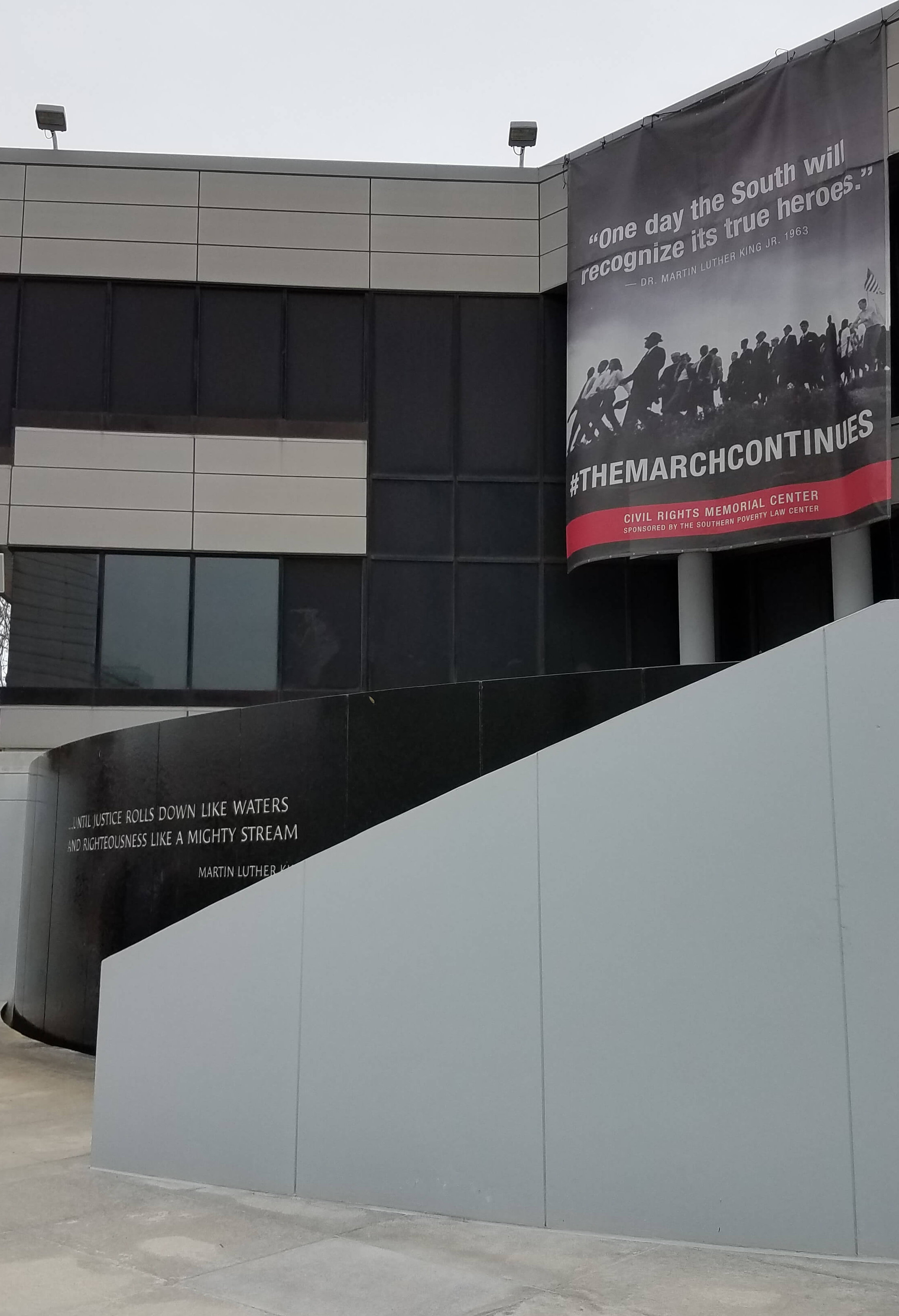
The next morning we planned to attend the church service at Dexter Avenue King Baptist Church, where Rev. Dr. Martin Luther King, Jr. preached. But first, we stopped at the Civil Rights Memorial in front of the Southern Poverty Law Center to better understand racial injustice.
Maya Lin designed the Memorial, noting Rev. Dr. King speaking the passage “until justice rolls down like waters and righteousness like a mighty stream” inspired her. Behind the memorial is a wall of water, with those words. The Memorial is a black granite chalice with water on the top. Etched in a circle around the Memorial are the names of important people and dates in the Civil Rights Movement.
“Selected were victims who fit at least one of three criteria: They were murdered because they were active in the movement; they were killed as acts of terror aimed at intimidating blacks and civil rights activists; or, their deaths, like that of Emmett Till, helped galvanize the movement by demonstrating the brutality faced by African Americans in the South.” Southern Poverty Law Center
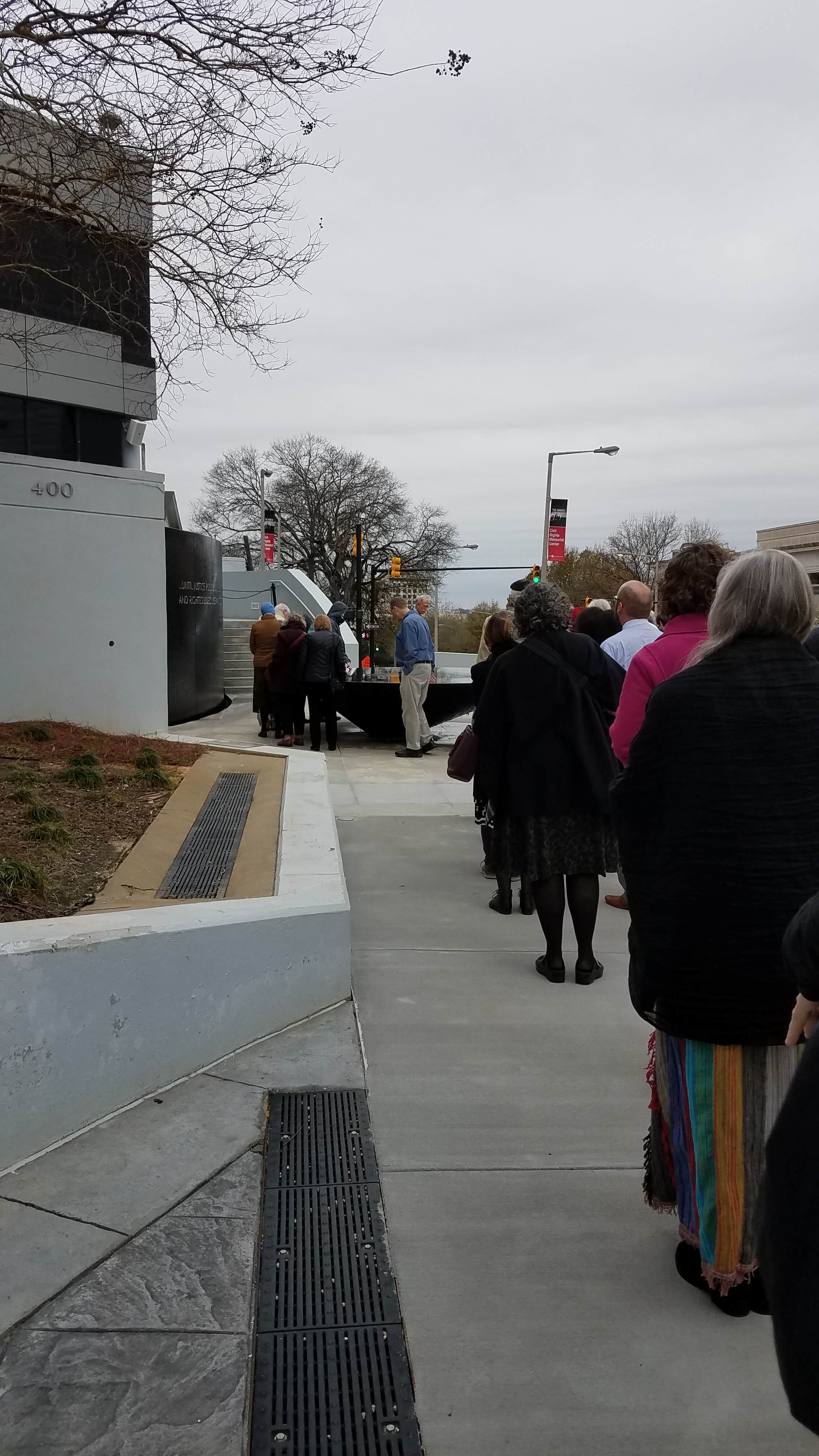
After everyone made their slow, silent journey around the chalice we headed to church.
Dexter Avenue King Baptist Church
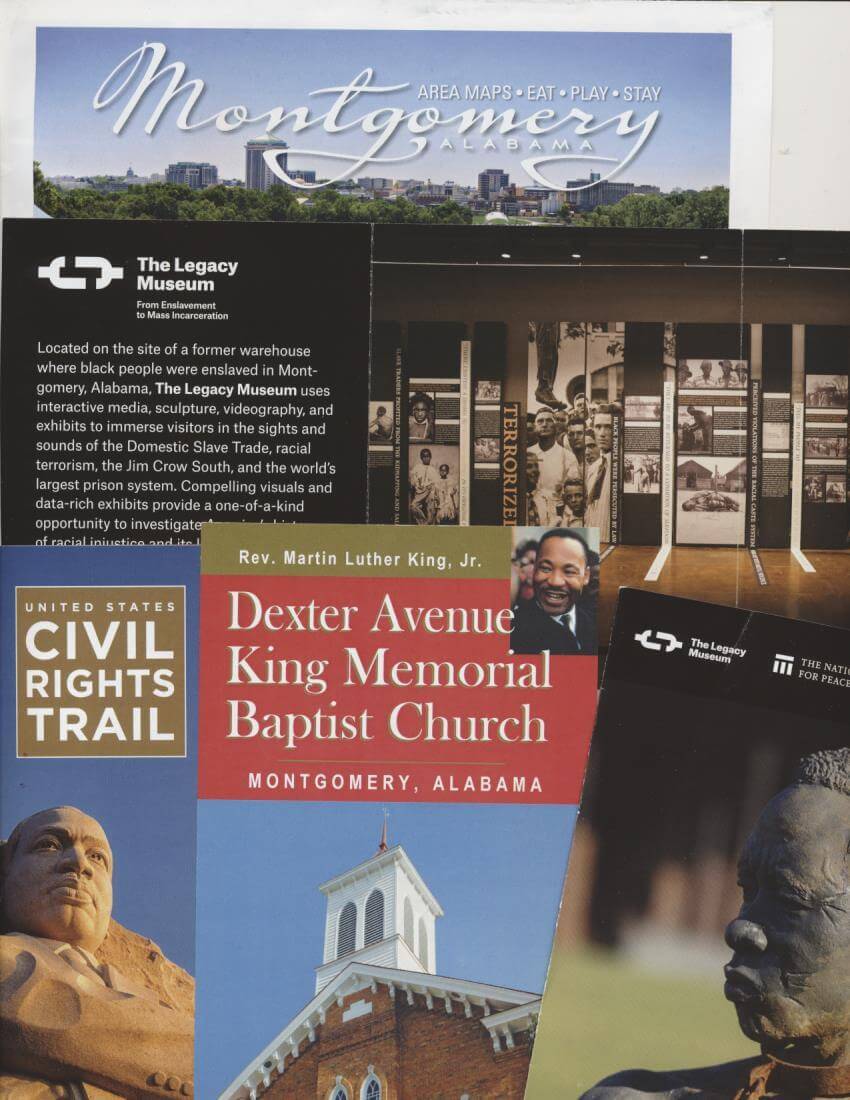
The church is famous for being the locus of many activities during the civil rights movement. For example, the church’s pastor, Rev. Dr. Martin Luther King, Jr., organized the Montgomery Bus Boycott here.
Although it looked like a typical Southern church, the congregation’s battle against racial injustice awed me. I loved every minute of the two-hour-long service, from the glorious music to the Overcoat of Love sermon. In the middle of the service, several congregants provided a mini-lecture about heart health.
Reverend Handy asked the visitors to introduce themselves. The cheeky pastor reminded our Tennessee group that we are football rivals. We were not the only visitors, though. Reverend Handy also welcomed people from the Czech Republic, Hungary, New Zealand, New York City, Boston, and Tuscaloosa.
During a rather lengthy ‘greet your neighbor’ time, I discovered that the 97-year-old man sitting next to me knew Rev. Dr. King. He told me King would have been glad to see us there.
On the other side of me was a man in a wheelchair and his friend, who is an attorney for EJI. EJI gained the exoneration of the man, who the courts falsely imprisoned for decades. The EJI staff take turns bringing him to worship. Finally, on my way out, I noticed a drawing of President Obama tucked into one of the window ledges.
How To Understand Racial Injustice in a Deeper Way
I feel blessed that I was part of this short journey into the Montgomery civil rights battle sites. The places we visited brought me deeper into understanding my part in this ongoing fight against racial injustice.
If you are interested in a similar trip, sign up for the Living Legacy Project mailing list to get updates on future Living Legacy Pilgrimages. You will understand racial justice in a deeper way.
READ NEXT
My post about what white people can do to support racial justice.
What Can White People Do to Support Black Lives Matter?
The Happy Activist contains a chapter on inventorying your activism knowledge, particularly in the area of cultural competence. The companion, The 5-Step Activism Path Workbook, contains inventories and exercises to help you set goals for being culturally competent.
BuzzFeed Quiz: How Privileged Are You?
At the website It’s Pronounced Metrosexual, you can find examples of situations that mean you hold privilege.
When you are ready, identify areas where you can grow in the process of dismantling privilege. A great resource is the Anti-Defamation League Personal Self-Assessment of Anti-Bias Behavior.
If you are a white person ready to support racial justice, visit Showing Up For Racial Justice to get started. SURJ has resources, such as this guide to White Supremacy Culture guide. You can search for local SURJ chapters.
Browse more examples of artistic activism.
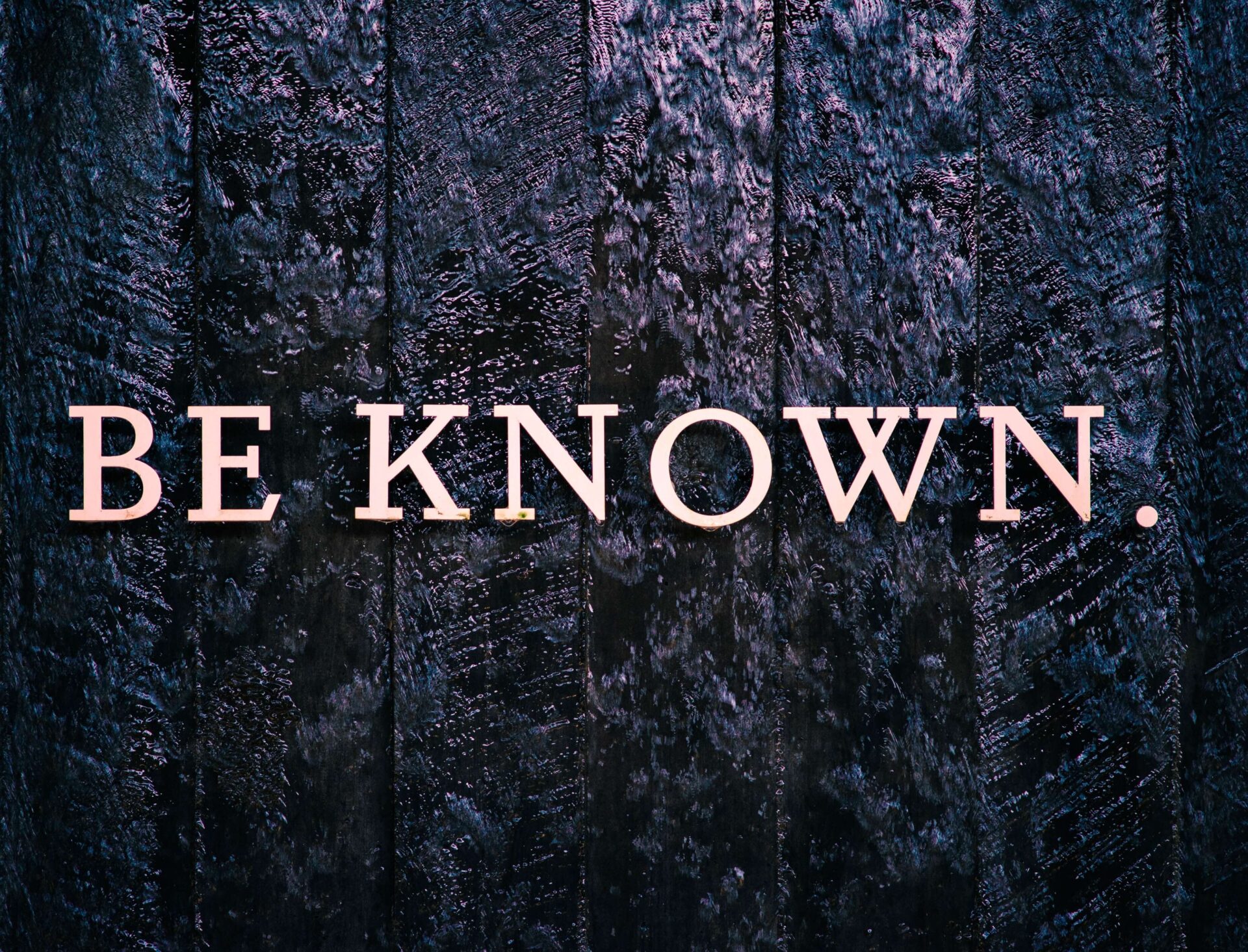


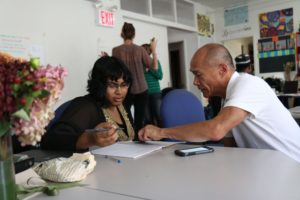
Pingback: How to Use Artistic Activism to Change the World
Pingback: How an Artist Teaches a Powerful Message about Racism
Pingback: Powerful Advice for New Activists: Agitate, Agitate, Agitate!
Pingback: What Can White People Do to Support Black Lives Matter?
Pingback: It Is Time to Talk About It